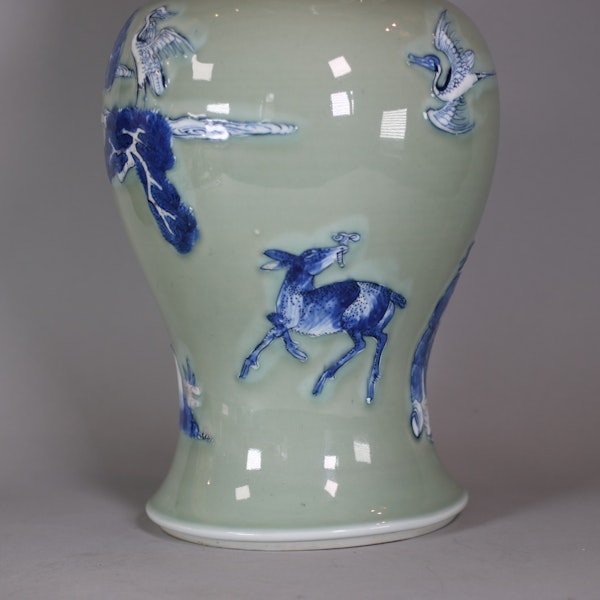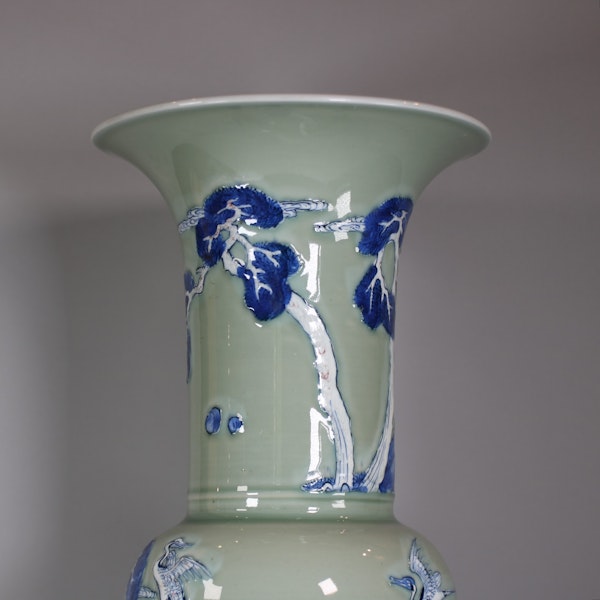Underglaze-blue and copper-red decorated celadon 'phoenix-tail' vase, Kangxi (1662-1722)
Underglaze-blue and copper-red decorated celadon 'phoenix-tail' vase, Kangxi (1662-1722)
POA
Description
Underglaze-blue and copper-red decorated celadon 'phoenix-tail' vase, Kangxi (1662-1722), of 'yenyen' form, with baluster body and long flaring neck; finely decorated in white slip, underglaze cobalt blue and copper red with a scholar holding a sceptre seated beside a rock, an attendant with a basket of flowers, roaming deer with lingzhi, cranes in flight and tall pines, all against a celadon ground.
Dimensions:
Height: 47.5 cm. (18 3/4in.)
Condition:
Chip to rim, frit to foot rim. The rim chip will be expertly filled and hardly visible when finished
Notes:
This vase is rich in the symbolism of longevity; a preoccupation of Daoist scholars and leaders alike during the Kangxi period. According to Daoist belief, deer are the only animal that can find and eat lingzhi, the fungi of immortality, and are also a symbol of wealth as the Chinese for deer (lu) is a homonym for the salary of an official. Pine, evergreen and long-living, is often portrayed alongside cranes, which are associated with Shoulao, the Daoist god of longevity. The immortal crane is said to live for thousands of years and act as messenger between earthly and heavenly realms, where Shoulao and the other Daoist deities reside. In addition to the overt emblems of immortality depicted, natural imagery contributes to this vase’s Daoist symbolism; for example the clouds represent mystical vapours that issue forth from the gateways between the human world and immortal paradise. The incorporation of auspicious natural imagery into artistic design was particularly popular during the late Ming and Qing as according to Daoist belief, immortality could only be achieved through living in harmony with the natural world and connecting with the universal order underpinning all things. In Chinese, yen-yen vases are referred to as ‘fengweizun’, which translates to ‘phoenix-tail’ and alludes to their narrow neck and flaring rim.
| item details | |
|---|---|
| Material and Technique | Porcelain with celdaon glaze and decoration in underglaze cobalt blue, white slip and iron red |
| Origin | Chinese |
| Period | 17th Century |
| Condition | Very good |
| Dimensions | Height: 47.5 cm. (18 3/4in.) |
Product REF: W727
















